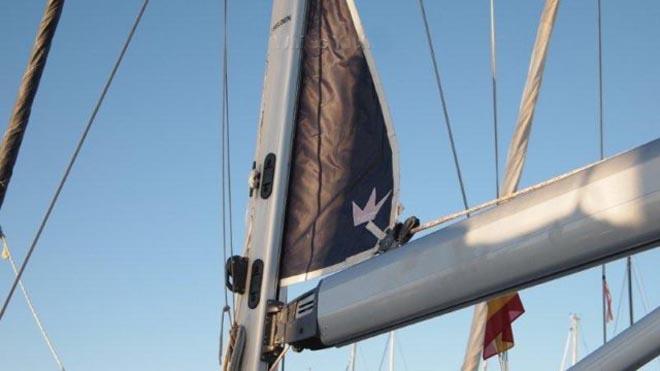In-mast furling - is it the 'no-no' we've always believed?
by Des Ryan/Sail-World Cruising on 5 Jan 2014

In-mast furling - not as scary as it’s been made out SW
In the inevitable cockpit-sundowner chat, in-mast furling has always been a 'no-no'. But is it true? Or is the cockpit-sundowner chat just scare-mongering? Here Des Ryan looks at a few of the issues.
There are two main questions anticipated with in-mast furling, and the horror stories strike a chord with most sailors.
First can they jam and leave you in trouble in a big blow? Secondly, with all that additional weight up the mast, how much performance and stability do you lose? Here we won't deal with the last, because if the system works well, then most cruising boats, unlike racing boats, are stable enough anyway to stand the extra mast weight.
The first one is certainly scary. If the in-mast furler jams, it means you cannot blow the halyard to drop the main and what might ensue is the stuff of worst (or one of the worst) nightmares.
Again, there are many sailors who have used in-mast furling for many years and have never - and I mean never - had a problem. I am one of them, and that's after many thousands of miles of cruising on two different boats.
The real issue, I believe, with in-mast jams is that the vast majority of the sailors using the system are not correctly using it...
I believe that if you follow the following steps, you can have trouble-free furling and benefit from never having to send anyone out of the cockpit in a stormy sea.
The first rule is to reef by hand. This means you will be intuitively aware the minute there is the hint of a problem. If you insist on reefing with a winch, be very careful and keep watching to make sure the system is working correctly.
Watch the location of the clew. It should NOT go horizontally into the mast. It travels up at an angle into the mast. This is important to understand so that you will notice if something is going wrong.
Traditional reefing methodology:
To reef in the traditional way, you would point into the wind, tighten down the mainsheet to keep the boom centred, haul up the main halyard until you have reached the top, then fall away and begin adjusting the vang, sheet, outhaul and halyard to the appropriate point of sail and conditions.
Then you effectively reverse these to drop the main, again keeping dead to wind or close to, and keeping the sheets and typically the vang taut.
In-mast furling methodology:
The method above does not work with an in-mast system, as, sooner or later, it is sure to jam.
First thing to remember is that you MUST allow room for the car to travel down the boom and for the clew/sail to enter and exit at its proper point.
If you cinch down on the main sheet and vang and then begin to haul in the reefing line, you will see that you cause tension down the leech of the sail. This often results in crinkles forming as you reef.
It is these crinkles that cause the jams.
So, what to do? You must release the tension on the main sheet and vang. Take the tension off so the sail can roll into the slot as designed. Also, keep some tension on the outhaul as you reef it to prevent any unwanted crinkles and a smooth roll.
Additional Hints:
1. You will notice the mast is slotted more to one side than the other. Depending on where your sail rolls, one point of sail may be easier to reef than others. Find out which is best for you do that so that there is no rubbing or chafing while reefing.
2. Do remember to keep some lubrication on the boom track to reduce friction.
This might sound a bit demanding, but once you get used to the process (firstly by UNDERSTANDING the process) it is clear and easy and keeps everyone safe and sound in the cockpit instead of having to tidy up the sails in a lumpy (or worse) sea.
...........
Letter from reader:
Sender: Martin Silk
Message: The 'Traditional reefing methodology' described here is quite unusual. It is normal practice to free off the mainsheet and vang when reefing to allow the boom to rise (or to raise the boom with the topping lift) whilst reefing. Unless the boom can rise, you are unable to correctly tighten the reefing pennant.
If you want to link to this article then please use this URL: www.sail-world.com/118172